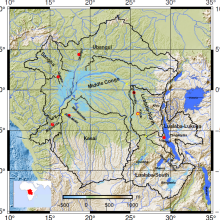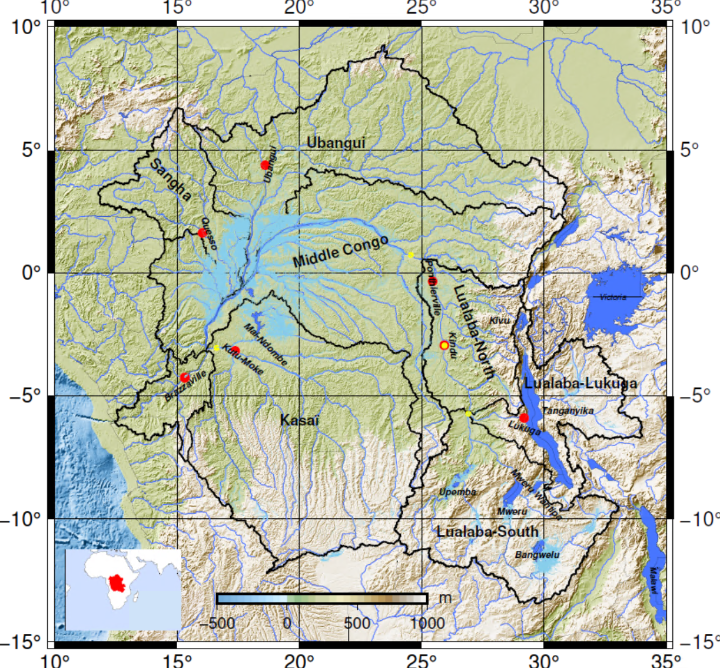As the second-largest river system and rainforest in the world, the Congo Basin is of global significance for biodiversity, water, and carbon cycles. However, its current water availability remains uncertain. Land use practices, deforestation and climate change pose significant threats to the basin water resources, whose future evolution remains unknown. Here, we characterize the relationship between drainable water storage and river discharge across the basin, using a combination of satellite and in situ observations over the last two decades. We estimate that the Congo Basin holds 476 km³ to 502 km³ of Total Drainable Water Storage (TDWS) (close to the volume of Lake Erie). Sub-basin analysis suggests that water availability is unevenly distributed across the region, with 63% of the TDWS being stored in its two southernmost basins, Kasaï (220–228 km³) and Lualaba (109–169 km³), while the northern sub-basins Sangha, Ubangui, and Middle Congo only contribute a total of 173 ± 8 km³. We further estimate the resistance of the Congo Basin for draining its water storage as 4.3 ± 0.1 month, a value similar to the Amazon Basin. However, geomorphology and the presence of surface water can result in larger time constants such as in the Lualaba sub-basin where lakes and swamps act as resistors. This study provides a robust regional estimate of the contemporary distribution of water availability across the Congo Basin. It gives a new basis to develop strategies to address the challenge of transboundary water management and water demand for nearly 120 million inhabitants, a population that is expected to double in a few decades.
| Contact | tourian@gis.uni-stuttgart.de |
|---|



